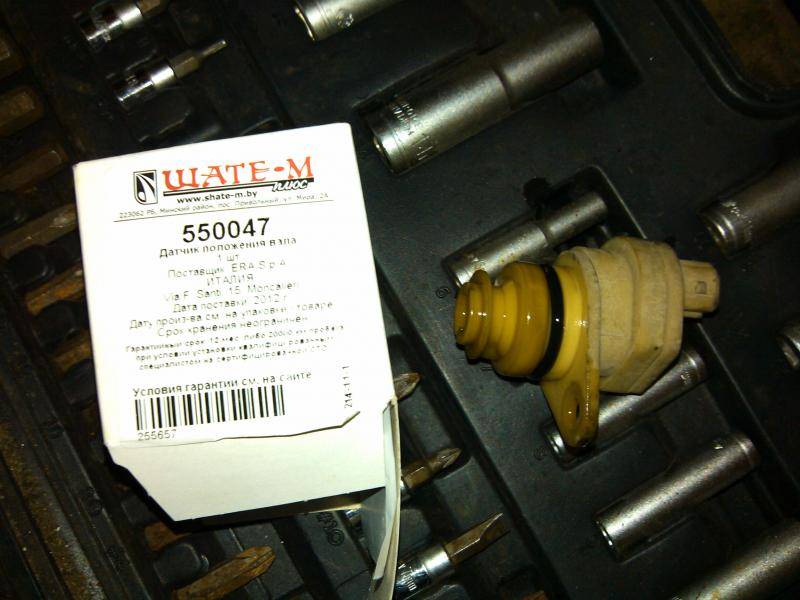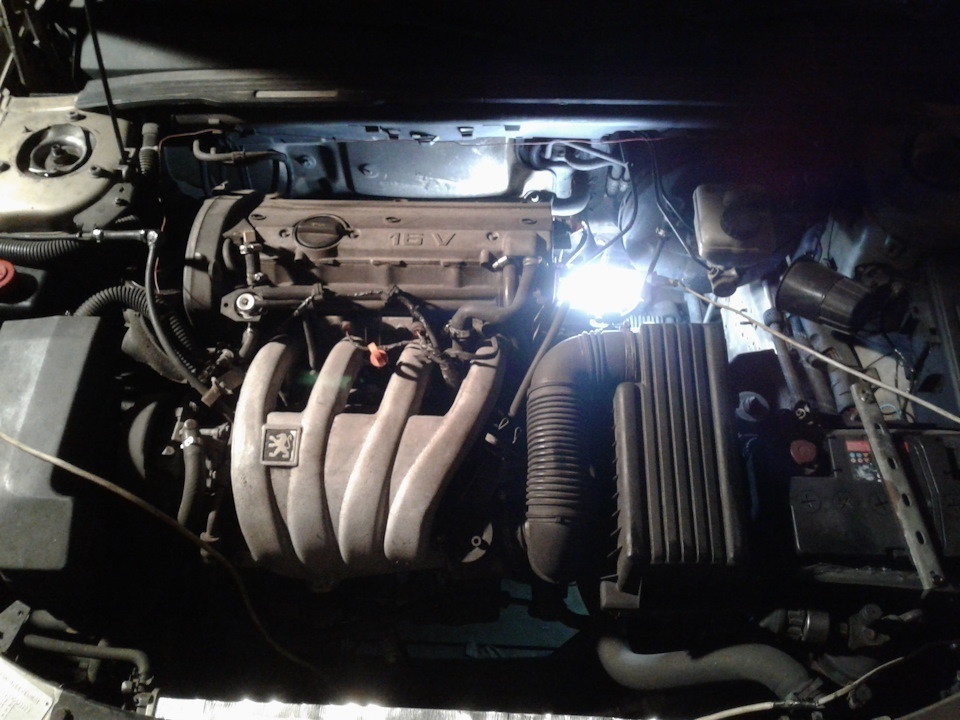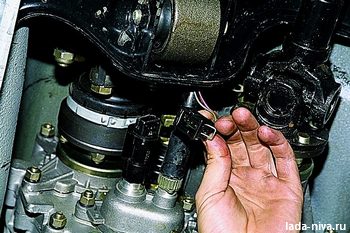
Peugeot 406 speed sensor
The speedometer started hitting stupid 80, jumping like a sick person, then 70, then 60, then 100, then stopped working altogether.
It was decided to replace the speed sensor.
It is located in the gearbox at the rear of the engine where the axle shafts are inserted.
You can see it and disconnect the chip through the hood.


It was also easier for me to work from the pit. We unscrew only one screw by 11 (who may have an asterisk) and simply lift it up, only carefully, maybe a little oil will leak out, I spit.
Checking the condition and replacing the vehicle speed sensor (DSS)
The VSS is mounted on the transmission case and is a variable reluctance sensor that begins to generate voltage pulses as soon as the vehicle speed exceeds 3 mph (4,8 km/h). The sensor pulses are sent to the PCM and used by the module to control the duration of the fuel injector open time and shifting. On models with manual transmission, an internal combustion engine is used, on models with automatic transmission there are two speed sensors: one is connected to the secondary shaft of the gearbox, the second to the intermediate shaft, and the failure of any of them leads to problems with gear shifting.
PROCESS
- Disconnect the sensor harness connector.
- Measure the voltage at the connector (wiring harness side) with a voltmeter.
- The positive probe of the voltmeter must be connected to the terminal of the black-yellow cable, the negative probe to ground. There should be battery voltage on the connector.
- If there is no power, check the condition of the VSS wiring in the area between the sensor and the fuse mounting block (on the left under the dashboard).
- Also make sure the fuse itself is good. Using an ohmmeter, test for continuity between the black wire terminal of the connector and ground. If there is no continuity, check the condition of the black wire and the quality of its terminal connections.
- Raise the front of the car and place it on jack stands. Block the rear wheels and shift into neutral.
- Connect the wiring to the VSS, turn on the ignition (do not start the engine) and check the signal wire terminal (blue-white) on the back of the connector with a voltmeter (connect the negative test lead to body ground).
- Keeping one of the front wheels stationary,
- turn by hand, otherwise the voltage should fluctuate between zero and 5V, otherwise replace the VSS.
